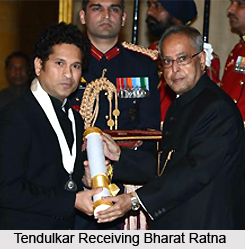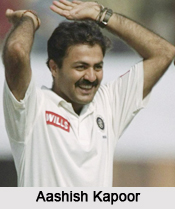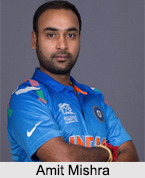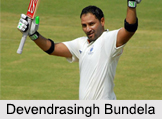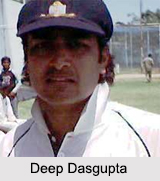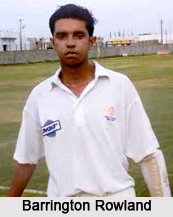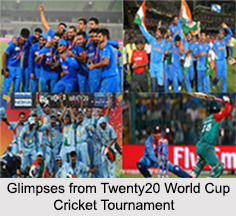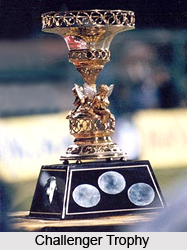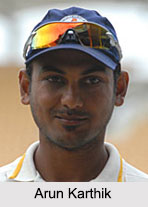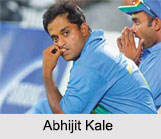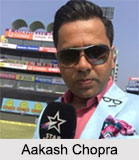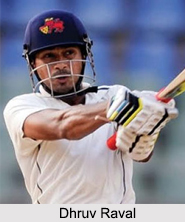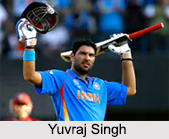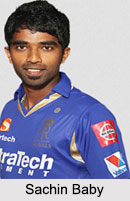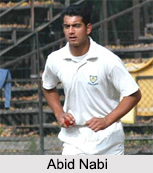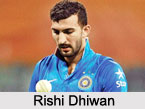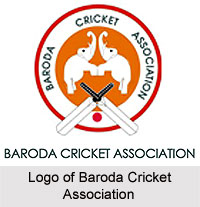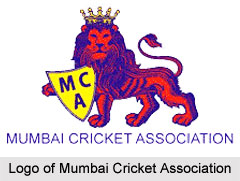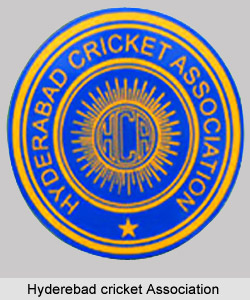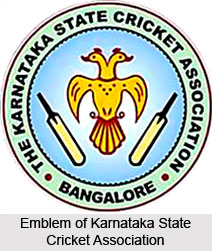Dismissals in cricket occur when a batsman is adjudged out, which means that either the fielding side is taking wicket or batting side is taking a wicket. It is also said in colloquial terms that fielding side have bagged, captured or snared a wicket. After getting out a batsman must discontinue his batting and permanently leave the field for the innings. A bowling team bowl out the entire batting team by dismissing 10 of the 11 players, assuming of course that the player or players from the batting team is not absent or have not retired hurt. As the players bat in pairs, when only one person is un-dismissed, it is not possible for them to bat any longer.
List of ten different ways of getting out:
The wicket is said to be broken if one or both of the bails have been dislodged and fallen to the ground. The field is notionally split into two halves, along a line down the centre of the pitch. The half of the field in front of the striker is called the off-side and the half behind is called the leg-side, or sometimes the on-side. Thus, standing at the bowler`s wicket and looking towards a right-handed striker`s wicket, the off side is to the left and the leg-side to the right (and vice-versa for a left-handed striker). The stumps of the striker`s wicket are called off-stump, middle-stump, and leg-stump, depending on which side they are on.
When a batsman gets out, no matter by what method, his wicket is said to have fallen, and the fielding team are said to have taken a wicket.
Here are some of the ways of getting out:
Caught
If a fielder catches the ball on the full after the batsman has hit it -with his bat. However, if the fielder catches the ball, but either during the catch or immediately afterwards touches or steps over the boundary then the batsman scores six runs and is not out.
Bowled
If the batsman misses the ball and it hits and breaks the wicket directly from the bowler`s delivery. The batsman is out whether or not he is behind his popping crease. He is also out bowled if the ball breaks the wicket after deflecting from his bat or body. The batsman is not out if the wicket does not break.
Leg before Wicket
If the batsman misses the ball with his bat, but intercepts it with part of his body when it would otherwise have hit the wicket, and provided several other conditions are satisfied. An umpire must adjudicate such a decision, and will only do so if the fielding team appeal the decision. If the ball has hit the bat before hitting the batsman then he cannot be given out LBW.
Stumped
If a batsman misses the ball and in attempting to play it steps outside his crease, he is out stumped if the wicket-keeper gathers the ball and breaks the wicket with it before the batsman can ground part of his body or his bat behind his crease.
Run Out
If a batsman is attempting to take a run, or to return to his crease after an aborted run, and a fielder breaks that batsman`s wicket with the ball while he is out of the crease.
Wicket
If, in attempting to hit a ball or taking off for a first run, the batsman touches and breaks the wicket. This includes with the bat or dislodged pieces of the batsman`s equipment - even a helmet or spectacles!
Handling the Ball
If a batsman touches the ball with a hand, not currently holding the bat, without the permission of the fielding side, then he can be adjudged out by the umpire. This does not include being hit on the hand by a delivery, or any other non-deliberate
Obstructing the Fielder
If a batsman deliberately interferes with the efforts of fielders to gather the ball or effect a run out, then he can be given out by the umpire. This does not include running a path between the fielder and the wicket so that the fielder cannot throw the stumps down with the ball, which is quite legal, but does include any deliberate attempt to swat the ball away.
Hit the Ball Twice
If a batsman hits a delivery with his bat and then deliberately hits the ball again for any reason other than to defend his wicket from broken by the ball then he can be given out. If the ball is bouncing or rolling around near the stumps, the batsman is entitled to knock it away so as to avoid being bowled, but not to score runs.
Timed Out
If a new batsman takes longer than two minutes, from the time the previous wicket falls, to appear on the field. These methods of getting out are listed in approximate order of how commonly they occur. The first five are reasonably common, the last five quite rare. The last three methods are almost never invoked. If a batsman is out caught, bowled, LBW, stumped, or hit wicket, then the bowler is credited with taking the wicket. No single person is credited with taking a wicket if it falls by any other method.
Officials
The game is adjudicated by two umpires, who make all decisions on the field and whose word is absolutely final. One umpire stands behind the non-striker`s wicket, ready to make judgements on LBWs and other events requiring a decision. The other umpire stands in line with the striker`s popping crease, about 20 metres (20 yards) to one side (usually the leg side, but not always), ready to judge stumping and run-outs at his end. The umpires remain at their respective ends of the pitch, thus swapping roles every over.
If the technology is available for a given match, a third umpire is sometimes used. He sits off the field, with a television replay monitor If an on-field umpire is unsure of a decision concerning either a run out or a stumping attempt, he may signal for the third umpire to view a television replay. The replay umpire cannot be used for any decisions other than run outs and stumping.
The game is also presided over by a match referee, who watches from outside the field. The referee makes no decisions of relevance to the outcome of the game, but determines penalties for breaches of various rules and misconduct. In professional games, these penalties are monetary fines. The most serious misconduct in a cricket match is of the order of a rude gesture to an opponent or throwing the ball into the ground in disgust. Such gross misbehaviour would attract large fines and possibly match suspensions. Penalties for physical violence can only be guessed at, but would possibly be a career suspension.

